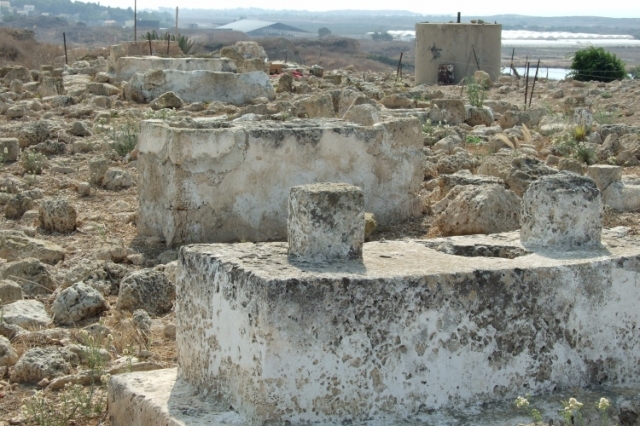Info
District: Haifa
Population 1948: 340
Occupation date: 16/07/1948
Jewish settlements on village/town land before 1948: None
Jewish settlements on village/town land after 1948: Tzrufa
Background:
Al-Sarafand before 1948
At 19 km distance from Haifa, the village stood on the narrow coastal plain south of 'Atlit. Secondary roads linked it to several nearby villages as well as to the coastal highway that ran 2 km to the east. In the late nineteenth century, al-Sarafand was situated on a ridge between a plain and the beach. Its general orientation was north-south, and its houses, made of stone and either mud or cement, were clustered together. The inhabitants of the village were Muslim. Agriculture, animal husbandry, and salt making were the main economic activities, and there were more than ten wells providing water for domestic use. The primary crops were various kinds of grain, and date palms were also planted in small patches on the western side of the village land.
Occupation, Depopulation, and Israeli Settlements
On 16 July 1948, two Haganah ships directed fire at the village of al-Sarafand to provide cover for the main attack by land - the first instance of cooperation between Israeli ground and naval forces in a military attack, according to the History of the War of Independence. The operation resulted in the occupation of nearby Kafr Lam. Its residents may have been expelled following its occupation, as were those of neighboring al-Tira, occupied on the same day.
On 3 August 1948, the kibbutz of Neve-Yam wrote to the Israeli Agriculture Center asking to be handed over the lands of al-Sarafand. According to Benny Morris, the settlers said that the depopulation of the village had 'opened up the possibility of [a] radical solution which once and for all could give us sufficient land for the development of [our] settlement.'
In 1949, Israel established the settlement of Tzerufa 1 km northeast of the village site, on village land. The settlement of Geva' Karmel, also built in 1949 east of the site, was established on the lands of the neighboring village of Jaba'.
The Village Today
There's only one house remaining from what used to be the village of al-Sarafand, a large structure with two arches in front. The Tel Aviv-Haifa highway crosses part of the site, while another part, fenced in with barbed wire, is overgrown with thorns and cactuses.
---------------------
Source: al-Khalidi, Walid (ed.). All that remains: the Palestinian villages occupied and depopulated by Israel in 1948. Washington DC: 1992.


